#python best gui library
Explore tagged Tumblr posts
Text
#nlp libraries#natural language processing libraries#python libraries#nodejs nlp libraries#python and libraries#javascript nlp libraries#best nlp libraries for nodejs#nlp libraries for java script#best nlp libraries for javascript#nlp libraries for nodejs and javascript#nltk library#python library#pattern library#python best gui library#python library re#python library requests#python library list#python library pandas#python best plotting library
0 notes
Text
Python GUI Libraries
From Tkinter to PyQt, Choosing the Best for Your Application Python’s versatility extends beyond its capabilities in data analysis and web development; it also offers a plethora of graphical user interface (GUI) libraries that empower developers to create interactive desktop applications. From the simplicity of Tkinter to the robustness of PyQt, each Python GUI library brings its own set of…
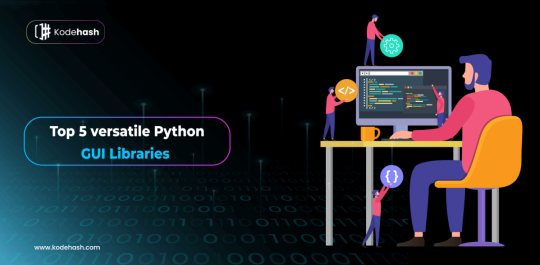
View On WordPress
0 notes
Note
what if you make spaces into breaks? (and enters and tabs into longer breaks)
i think it would help differentiate the songs.
i've gotten quite a few asks about methods for introducing rhythm to version 2 of the script, but honestly i think this is the best one, it's simple and it works. i do want to shout out @dontsaythatillcry though for drawing up a whole ass diagram and everything, their approach is definitely still on the table (if i can get this old midi python library to cooperate)
i'll let you guys know when v2 releases in a billion years which approach i decided on :3
20 notes
·
View notes
Text
Year summary #1
Carouselambra playing in the background How the fuck do I even start this?
I had to begin from changes that took place in this year and from what I know and recall, a few took place. So maybe let's start from the one that made impact on my personal life and that is a better relationship with parents.
I was working on that since the last year, but it kicked off good in this year. Got more into old music, got into The Beatles and parents started to be such curious little shits that dad started coming to my room to check what albums I bought and I've convinced mom to watch The Beatles' movies with me - I don't remember her laughing this much since I've made her watch "Monty Python and the Holy Grail" with me. Dad even started asking me about stuff, it turns out that now I'm showing my mom old music, not the other way around like it always was. I keep a list of albums to play her when the summer comes around in the next year and there's actually quite a lot already XD
I'm so happy from getting on better terms with dad, it fills me with joy *sob sob*
I also started buying more albums, bought some pins even and since they opened a band accessory shop I've asked about posters. They don't sell them yet, but the guy asked what I'm looking for, I told him and he said that he can get them if they'll be selling posters. That can mean that maybe I'll get lucky to get a Led Zeppelin's or The Who's poster - I'm mostly keen on The Who's one <3
With this year passing I also feel that I want to go to work, but I need to be patient. This library degree is very tiring, it's not as easy and chill as the last one was. I literally wonder how I will pass upcoming exams, especially from one subject that only one person gets? This professor isn't explaining anything, like, she teaches something she doesn't understand, I mean... Why are you teaching then?
I also started learning chords on my guitar slowly, very slowly, but it's going somehow!
One thing that changed, with me working on myself was putting a serious blockade away. Not entirely, but I started clowning around with friends and it's one of the best things to do. I even clown around with mom and dad, mostly mom though. We get stupid sometimes and it's fun!
So that would sum up my personal life I think, from what I want to say. And now to this blog...
It changed again, because all heavy metal bands disappeared and this blog became classic rock oriented. That's because I stopped listening to this genre. You can say that I kinda grew bored of it? Or that I noticed I'm getting a headache from it, but like, there was this one day when I drove with my dad and the album by Led Zeppelin ended and Metallica began to play. I listened and I was honestly bored. It just hit me that there's nothing special in it. Lars is still a good drummer but like... I heard better ones and didn't find anything interesting in his playing this time. It repeated with every band I was listening to so I just dropped out of that, deciding to stick to older music. That was a good decision, honestly.
But the biggest change on here that happened is the fact that I got so many mutuals this year that I can't wrap my mind around. I won't tag anyone here, because I might skip on someone and I don't want that to happen, but I love you all. You're making this place a lot better and honestly? Classic rock fandom is like a big family and I'm happy to be somehow a part of it. Never had I thought I will find such supportive people on Internet and yet, there you are. I'm glad I've met you all <3
That would be all for this one then. Tomorrow's one tho... Fucking hell, this will be a ride...
5 notes
·
View notes
Text


day 39 of 100 days of productivity 💌
Forgive me, I’m one minute late. I was up FaceTiming my best friend and working on physics.
Average day! We worked on finishing a picture of a house using the pillow library in Python. I think mine turned out pretty cute. The nice guy next to me giggled and said it looked like Among Us. I can’t help but agree a little.
I have two tests tomorrow, one in maths, the other in CS. Wish me luck!
- J
5 notes
·
View notes
Text
The Best Programming Languages For Beginners

When choosing the right programming language, it’s essential to consider your goals and career. You want to make sure that you choose a programming language that is both in demand and easy to learn. Python is an ideal choice for beginners because it reads like English and has a simplified syntax. It’s also versatile and can be used for anything from web development to software development.
Python
Python is a popular general-purpose programming language that’s easy to learn for beginners and widely used in web development, machine learning, art, automation, and more. It also has a vast community of resources that are available to new programmers.
Java is another widely used programming language, especially for mobile app development. It’s used at companies of all sizes (including HubSpot!) and is one of the easiest to learn if you want to develop for a variety of platforms.Better is to click here or visit our official website to know about Programming question answer.
C is an older programming language but still a good choice for beginners because it’s more “machine-level” and gives you the lowest-level control over computer hardware. It’s also the most common base for other languages, like C# and Ruby.
Java
Despite being not as beginner-friendly as Python, Java is a good programming language to start with. It's a general-purpose programming language with a versatile library and free online tutorials.
It's also a cross-platform language, which makes it suitable for mobile and desktop applications. It's the language of choice for Android development and used in a number of enterprise-level software applications.
C is one of the oldest languages and forms the basis for modern languages like Python, Java, and JavaScript. However, it has a low level of abstraction and requires that code is compiled (translated into machine-readable code) before it can be run. This can make it difficult for beginners to understand. Moreover, its syntax can be confusing. But, it's an excellent foundation for more advanced language learning.
Many people are interested in learning programming, but choosing the best language can be intimidating. Luckily, there are plenty of resources to help you get started. You can learn the basics of multiple languages with a coding boot camp, such as the Georgia Tech Coding Boot Camp, which offers a variety of courses including HTML, JavaScript, and jQuery.
Other popular languages include C, which is a general-purpose, compiled language that’s widely used in back-end software applications like web servers. Python is a versatile programming language that’s easy to learn for beginners and can be used in any application. Ruby is a dynamic, object-oriented language that’s commonly implemented using the Rails framework. Its concise syntax and convention-over-configuration approach makes it easier to build and deploy apps.
Perl
Perl is a high-level dynamic general-purpose scripting language. It is popular among system administrators for its text-processing capabilities, specifically its own in-built version of regular expressions. It is also used for web development and GUI programming.
Beginners can start learning the basics of the programming language by following the free online courses offered on Udemy. These courses begin with basic theory and then move on to specific aspects of the language. They include topics such as lists, arrays, and subroutines. They also cover how to handle errors in coding. Perl has a large community of developers, with over 230 local groups, mailing lists and support/discussion websites. It is also open source and supports more than 25,000 extension modules on CPAN. This flexibility makes it an ideal programming language for beginners.
HTML
Computer programming allows us to create the software and applications that make our lives easier, more entertaining, and more efficient. But deciding which language to learn can be a difficult choice for beginners, particularly when there are so many options available.
youtube
Programming languages may seem different on the surface, but they all have similar structures and features. This means that whichever language you choose to learn, you’ll be learning important coding concepts that will be applicable to any other languages you might decide to explore later on.
Before deciding which programming language to learn, it’s important to consider your goals and current skill level. Once you’ve identified your goals, it’s easy to narrow down your options and find the best programming language for beginners.
2 notes
·
View notes
Text
Advanced Python Training: Master High-Level Programming with Softcrayons
Advanced python training | Advanced python course | Advanced python training institute
In today's tech-driven world, knowing Python has become critical for students and professionals in data science, AI, machine learning, web development, and automation. While fundamental Python offers a strong foundation, true mastery comes from diving deeper into complex concepts. That’s where Advanced Python training at Softcrayons Tech Solution plays a vital role. Whether you're a Python beginner looking to level up or a developer seeking specialized expertise, our advanced Python training in Noida, Ghaziabad, and Delhi NCR offers the perfect path to mastering high-level Python programming.

Why Advance Python Training Is Essential in 2025
Python continues to rule the programming world due to its flexibility and ease of use. However, fundamental knowledge is no longer sufficient in today’s competitive business landscape. Companies are actively seeking professionals who can apply advanced Python principles in real-world scenarios. This is where Advanced python training becomes essential—equipping learners with the practical skills and deep understanding needed to meet modern industry demands.
Our Advanced Python Training Course is tailored to make you job-ready. It’s ideal for professionals aiming to:
Build scalable applications
Automate complex tasks
Work with databases and APIs
Dive into data analysis and visualization
Develop back-end logic for web and AI-based platforms
This course covers high-level features, real-world projects, and practical coding experience that employers demand.
Why Choose Softcrayons for Advanced Python Training?
Softcrayons Tech Solution is one of the best IT training institutes in Delhi NCR, with a proven track record in delivering job-oriented, industry-relevant courses. Here’s what sets our Advanced Python Training apart:
Expert Trainers
Learn from certified Python experts with years of industry experience. Our mentors not only teach you advanced syntax but also guide you through practical use cases and problem-solving strategies.
Real-Time Projects
Gain hands-on experience with live projects in automation, web scraping, data manipulation, GUI development, and more. This practical exposure is what makes our students stand out in interviews and job roles.
Placement Assistance
We provide 100% placement support through mock interviews, resume building, and company tie-ups. Many of our learners are now working with top MNCs across India.
Flexible Learning Modes
Choose from online classes, offline sessions in Noida/Ghaziabad, or hybrid learning formats, all designed to suit your schedule.
Course Highlights of Advanced Python Training
Our course is structured to provide a comprehensive learning path from intermediate to advanced level. Some of the major modules include:
Object-Oriented Programming (OOP)
Understand the principles of OOP including classes, inheritance, polymorphism, encapsulation, and abstraction. Apply these to real-world applications to write clean, scalable code.
File Handling & Exception Management
Learn how to manage files effectively and handle different types of errors using try-except blocks, custom exceptions, and best practices in debugging.
Iterators & Generators
Master the use of Python’s built-in iterators and create your own generators for memory-efficient coding.
Decorators & Lambda Functions
Explore advanced function concepts like decorators, closures, and anonymous functions that allow for concise and dynamic code writing.
Working with Modules & Packages
Understand how to build and manage large-scale projects with custom packages, modules, and Python libraries.
Database Connectivity
Connect Python with MySQL, SQLite, and other databases. Perform CRUD operations and work with data using Python’s DB-API.
Web Scraping with BeautifulSoup & Requests
Build web crawlers to extract data from websites using real-time scraping techniques.
Introduction to Frameworks
Get a basic introduction to popular frameworks like Django and Flask to understand how Python powers modern web development.
Who Can Join Advanced Python Training?
This course is ideal for:
IT graduates or B.Tech/MCA students
Working professionals in software development
Aspirants of data science, automation, or AI
Anyone with basic Python knowledge seeking specialization
Prerequisite: Basic understanding of Python programming. If you're new, we recommend starting with our Beginner Python Course before moving to advanced topics.
Tools & Technologies Covered
Throughout the Advance Python Training at Softcrayons, you will gain hands-on experience with:
Python 3.x
PyCharm / VS Code
Git & GitHub
MySQL / SQLite
Jupyter Notebook
Web scraping libraries (BeautifulSoup, Requests)
JSON, API Integration
Virtual environments and pip
Career Opportunities After Advanced Python Training
After completing this course, you will be equipped to take up roles such as:
Python Developer
Data Analyst
Automation Engineer
Backend Developer
Web Scraping Specialist
API Developer
AI/ML Engineer (with additional learning)
Python is among the top-paying programming languages today. With the right skills, you can easily earn a starting salary of ₹4–7 LPA, which can rise significantly with experience and expertise.
Certification & Project Evaluation
Softcrayons Tech Solution will provide you with a globally recognized Advance Python Training certificate once you complete the course. In addition, your performance in capstone projects and assignments will be assessed to ensure that you are industry ready.
Final Words
Python is more than simply a beginner's language; it's an effective tool for developing complex software solutions. Enrolling in the platform's Advanced python training course is more than simply studying; it is also preparing you for a job in high demand and growth.Take the next step to becoming a Python master. Join Softcrayons today to turn your potential into performance. Contact us
0 notes
Text
Complete Python Tkinter Tutorial: Master GUI Programming Easily

If you want to create desktop applications using Python, then this Python Tkinter Tutorial is the perfect place to start. Tkinter is the built-in GUI (Graphical User Interface) library in Python that helps you design windows, buttons, labels, and more for your application. It is easy to use and does not require any additional installation, making it ideal for beginners.
In this tutorial, you will learn how to design a basic window, add useful elements like buttons and text boxes, and create interactive features for your app. Tkinter is great for building small tools like calculators, to-do lists, form applications, and even games with simple interfaces.
The best part of this Python Tkinter Tutorial is that it explains each step clearly so that even someone with no GUI experience can understand. You will learn how each part of the interface works and how to connect them with user actions. This knowledge is very helpful if you are planning to build user-friendly desktop software.
Many students, developers, and hobbyists choose Tkinter because of its simplicity and strong community support. Whether you are learning Python for fun or for your career, understanding Tkinter gives you the power to make your applications look professional.
Start your journey with this easy and practical guide. For more detailed information, visit the Python Tkinter Tutorial.
0 notes
Text
Comparing Python GUI Libraries: Choosing the Right Tool for Your Project
Python offers a rich ecosystem of GUI libraries, making it a go-to language for developing cross-platform desktop applications. Each library comes with unique strengths, suited to different levels of complexity and project requirements. In this post, we’ll explore the most popular Python GUI libraries and how LabDesk, with its innovative approach, enhances the GUI development experience.
1. Tkinter: Simplicity at Its Best
Tkinter is Python’s standard GUI toolkit, included with Python installations. It’s perfect for beginners due to its simplicity and lightweight nature. Tkinter provides essential widgets like buttons, labels, and textboxes but lacks modern styling and advanced features.
Best For: Quick prototypes, small-scale applications. Limitations: Limited customization and outdated aesthetics.
2. PyQt: Power and Flexibility
PyQt is a robust library based on the Qt framework. It supports a vast array of widgets and advanced functionalities like multimedia and database integration. PyQt offers stunning designs, but its steep learning curve and commercial licensing can be barriers for some developers.
Best For: Enterprise-level applications requiring advanced features. Limitations: Complexity and licensing costs.
3. Kivy: Multi-Touch and Cross-Platform
Kivy excels in building multi-touch and mobile-friendly applications. It uses OpenGL for rendering, ensuring performance across platforms. However, it may not be the best choice for traditional desktop apps.
Best For: Mobile apps, interactive applications. Limitations: Not ideal for conventional GUIs.
LabDesk: Revolutionizing GUI Development
LabDesk takes GUI design to the next level with its drag-and-drop interface, real-time previews, and Tkinter code generation. It simplifies the development process, bridging the gap between traditional coding and modern design workflows.
Why LabDesk?
Ideal for beginners and experts.
Generates clean, production-ready Tkinter code.
Saves time while delivering professional results.
LabDesk redefines GUI design, making it accessible and efficient for all developers. Whether you’re a novice or an expert, it ensures you have the right tools to succeed.
0 notes
Text
Exploring Programming Languages: A Guide to Training at DICS Innovatives
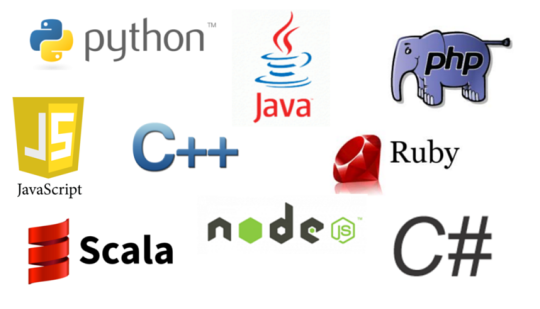
In today’s technology-driven world, proficiency in programming languages is a vital skill. Whether you're a beginner looking to dive into coding or an experienced developer aiming to enhance your skills, training programs can provide the structured learning you need. At DICS Innovatives, we offer comprehensive training in several key programming languages, including Python, Java, C, and C++. Here’s a closer look at what each training program entails.
Python Training: The Versatile Language
Want to learn python course join best python training institute in Pitampura, Python has gained immense popularity due to its simplicity and versatility. It’s widely used in web development, data analysis, artificial intelligence, and more.
What You’ll Learn:
· Basic syntax and programming concepts
· Object-oriented programming
· Libraries and frameworks (like Flask and Django)
· Data manipulation and analysis with Pandas
Why Choose Python?
Python is an excellent choice for beginners, thanks to its readable syntax. It also has a vast community and numerous resources for learners.
Java Training: The Foundation of Enterprise Applications
Want to learn python course join best java training institute in Pitampura, Java is a cornerstone of enterprise-level applications and Android development. It’s known for its portability and robustness.
What You’ll Learn:
· Core Java concepts (OOP, exception handling, etc.)
· Java collections framework
· Building GUI applications
· Introduction to Java frameworks (Spring, Hibernate)
Why Choose Java?
Java’s strong community support and extensive libraries make it a great choice for those looking to enter the tech industry, especially in large organizations.
PHP Training: The Language of the Web
Want to learn python course join best php training institute in Pitampura, PHP is a server-side scripting language that is essential for web development. It powers many websites and applications, making it a key skill for web developers.
What You’ll Learn:
· Basic and advanced PHP syntax
· Working with databases (MySQL)
· Building dynamic web applications
· Frameworks like Laravel and CodeIgniter
Why Choose PHP?
PHP is widely used for web development due to its ease of integration with HTML and its capabilities for server-side scripting. It’s a great choice for those looking to specialize in web technologies.
C Training: Understanding the Basics
C is a powerful language that serves as the building block for many other languages. It’s crucial for systems programming and embedded systems.
What You’ll Learn:
· Fundamental programming concepts
· Memory management and pointers
· File handling
· Basic algorithms and data structures
Why Choose C?
Learning C provides a deep understanding of how software interacts with hardware, making it essential for aspiring systems programmers.
C++ Training: The Next Step from C
C++ builds on C and adds object-oriented features, making it suitable for large-scale applications, game development, and performance-critical software.
What You’ll Learn:
· Advanced C++ concepts (inheritance, polymorphism, etc.)
· Standard Template Library (STL)
· Developing applications using C++
· Best practices in software design
Why Choose C++?
C++ offers greater control over system resources and is widely used in competitive programming and game development.
Why DICS Innovatives?
At DICS Innovatives, we pride ourselves on providing high-quality training that combines theoretical knowledge with practical experience. Our courses are designed by industry experts and include hands-on projects to ensure you gain real-world skills.
· Benefits of Training with Us:
· Experienced instructors
· Flexible learning schedules
· Comprehensive course materials
· Placement assistance
Conclusion
Whether you choose Python, Java, C, or C++, DICS Innovatives is here to guide you on your programming journey. Our tailored training programs will equip you with the skills you need to thrive in the tech industry. Join us today and take the first step towards a rewarding career in programming!
Link Source: https://dicsinnovatives.blogspot.com/2024/10/exploring-programming-languages-guide.html
0 notes
Text
Building User-Friendly Interfaces with Python: An Overview of Python GUI Libraries
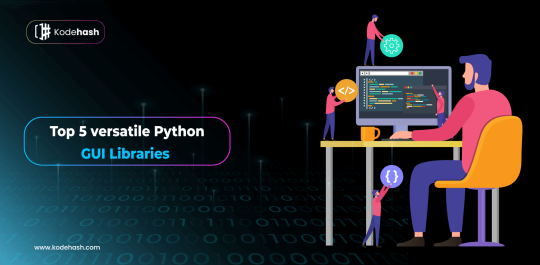
In today's digital landscape, creating user-friendly interfaces is paramount for the success of software applications. Python, known for its simplicity and versatility, offers a wide array of graphical user interface (GUI) libraries that empower developers to build intuitive and visually appealing applications. In this comprehensive overview, we delve into the realm of Python GUI libraries, exploring their features, functionalities, and suitability for various project requirements. From beginner-friendly options to advanced frameworks, Python provides developers with the tools they need to craft compelling user interfaces. Join us as we embark on a journey to discover the best Python GUI libraries and learn how they can elevate your application development process
1. Understanding Python GUI Libraries:
Python GUI libraries are frameworks and toolkits that facilitate the creation of graphical user interfaces for desktop applications. These libraries provide developers with pre-built components, such as buttons, menus, and windows, along with event-driven programming paradigms for handling user interactions. By leveraging Python GUI libraries, developers can streamline the process of interface design and development, enabling them to focus on crafting engaging user experiences.
Best Python GUI Libraries:
Tkinter: Tkinter stands as Python's de facto standard GUI library, offering a simple and intuitive interface for building desktop applications. With Tkinter, developers can create basic interfaces with ease, thanks to its lightweight nature and seamless integration with Python's standard library. While Tkinter may lack the advanced features and modern aesthetics of other libraries, its accessibility and simplicity make it an excellent choice for beginners and small-scale projects. b. PyQt: PyQt is a comprehensive Python binding for the Qt framework, providing developers with a robust set of tools for creating cross-platform applications with native look and feel. With PyQt, developers can harness the power of Qt's extensive widget set, layout management, and event handling capabilities to build professional-grade interfaces. Despite its steep learning curve and licensing considerations for commercial use, PyQt offers unparalleled flexibility and performance for demanding applications.
Kivy:
Kivy is an open-source Python framework for developing multitouch applications, with a focus on usability and rapid prototyping. Unlike traditional Python GUI libraries, Kivy employs a declarative syntax and an event-driven architecture, making it ideal for building interactive and dynamic interfaces. With Kivy's support for touch input, gestures, and animations, developers can create immersive user experiences across a wide range of devices and platforms.
wxPython:
wxPython is a Python binding for the wxWidgets toolkit, offering a native look and feel across different operating systems. With wxPython, developers can take advantage of wxWidgets' extensive widget set, platform-specific features, and seamless integration with native APIs. While wxPython may have a steeper learning curve compared to other libraries, its mature ecosystem and stable performance make it a reliable choice for building cross-platform applications.
Considerations for Choosing a Python GUI Library:
When selecting a Python GUI library for your project, several factors should be taken into consideration:
Complexity and learning curve: Choose a library that aligns with your skill level and project requirements. Beginners may prefer simpler libraries like Tkinter, while experienced developers may opt for more advanced frameworks like PyQt or Kivy.
Platform compatibility: Consider the target platforms for your application and ensure that the chosen library supports them adequately. Some libraries, like PyQt and wxPython, offer cross-platform support, allowing developers to deploy applications on Windows, macOS, and Linux with ease.
Performance and scalability: Evaluate the performance and scalability of the library, especially for larger and more complex applications. While lightweight libraries like Tkinter may suffice for simple projects, more resource-intensive applications may benefit from the performance optimizations offered by frameworks like PyQt and Kivy.
Community and documentation: Assess the community support and availability of documentation for the chosen library. A vibrant community and comprehensive documentation can be invaluable resources for troubleshooting issues, learning new concepts, and accelerating the development process.
Conclusion:
Python GUI libraries play a crucial role in simplifying the process of interface design and development, enabling developers to create user-friendly applications with ease. Whether you're a beginner exploring the world of GUI programming or an experienced developer seeking advanced features and performance optimizations, Python offers a diverse range of libraries to suit your needs. By understanding the features, functionalities, and considerations associated with each library, developers can make informed decisions when choosing the best Python GUI library for their projects. With the right tools at their disposal, developers can unleash their creativity and craft compelling user experiences that delight users and drive the success of their applications.
0 notes
Text
Labdeck Flet GUI Designer: Revolutionizing Python GUI Development
In the ever-evolving landscape of Python development, creating graphical user interfaces (GUIs) has long been a challenge that developers face. The process often involves complex coding, multiple libraries, and a steep learning curve. Enter Labdeck Flet GUI Designer, a revolutionary tool that's set to transform the way Python developers approach GUI creation, making it more accessible, efficient, and enjoyable.
What is Labdeck Flet GUI Designer?
Labdeck Flet GUI Designer is an innovative rapid application development (RAD) tool specifically designed for Python developers. It leverages the power of Flet, a modern framework that allows developers to build interactive multi-platform applications using Python. This cutting-edge tool bridges the gap between design and functionality, offering a seamless experience for creating visually appealing and highly functional GUIs.
Key Features:
Intuitive Drag-and-Drop Interface: Design your GUI effortlessly by dragging and dropping components onto the canvas.
Real-Time Preview: See your application come to life as you design, with instant visual feedback.
Seamless Python Integration: Easily connect your GUI elements with Python code for enhanced functionality.
Responsive Design Support: Create interfaces that adapt to different screen sizes and orientations.
Rich Component Library: Access a wide array of pre-built, customizable UI components.
Cross-Platform Compatibility: Develop once, deploy everywhere - from desktop to web.
Code Export: Generate clean, readable Python code from your visual designs.
Theme Customization: Easily apply and modify themes to maintain consistent aesthetics.
Layout Management: Utilize powerful layout tools for precise control over your UI structure.
Why Choose Labdeck Flet GUI Designer?
Labdeck Flet GUI Designer stands out from other GUI development tools for several compelling reasons:
Unparalleled Ease of Use: Its intuitive interface makes GUI design accessible to developers of all skill levels, from beginners to seasoned professionals.
Python-Centric Approach: Built with Python developers in mind, it seamlessly integrates with existing Python workflows and libraries.
Cross-Platform Compatibility: Create applications that run smoothly on Windows, macOS, Linux, and even web browsers, all from a single codebase.
Time-Saving Efficiency: Rapidly prototype and build applications, significantly reducing development time and allowing for quick iterations.
Code Quality and Maintainability: The generated code is clean, well-structured, and easy to maintain, following Python best practices.
Extensive Component Library: Access a wide range of pre-built components, reducing the need for custom widget development.
Community and Ecosystem: Benefit from a growing community of developers and a rich ecosystem of plugins and extensions.
Continuous Updates and Support: Regular updates ensure compatibility with the latest Python versions and introduce new features based on user feedback.
Getting Started with Labdeck Flet GUI Designer
Embarking on your journey with Labdeck Flet GUI Designer is straightforward. Follow these steps to begin creating stunning Python GUIs:
Installation:
Visit the official Labdeck website and download the Flet GUI Designer installer.
Run the installer and follow the on-screen instructions to set up the software on your system.
Launch and Project Creation:
Open Labdeck Flet GUI Designer.
Click on "New Project" and choose a template or start from scratch.
Design Your Interface:
Use the drag-and-drop interface to add components to your canvas.
Arrange and resize elements to create your desired layout.
Customize Components:
Select components and use the properties panel to adjust their attributes.
Apply styles, set behaviors, and configure event handlers.
Preview and Test:
Utilize the real-time preview feature to see your application in action.
Test different screen sizes to ensure responsive design.
Add Functionality:
Switch to the code view to add Python logic to your GUI elements.
Use the integrated code editor to write and test your Python code.
Export and Integrate:
Export your project as Python code or as a standalone application.
Integrate the generated code into your existing Python projects if needed.
Advanced Features and Techniques
As you become more comfortable with Labdeck Flet GUI Designer, explore these advanced features to take your GUI development to the next level:
Custom Widgets
Learn to create and save custom widgets, combining multiple components into reusable elements that can be shared across projects.
State Management
Implement efficient state management techniques to handle complex application logic and data flow within your GUI.
Theming and Styling
Master the art of creating and applying custom themes to give your applications a unique and professional look.
Performance Optimization
Discover best practices for optimizing your GUI's performance, ensuring smooth operation even with complex layouts and large datasets.
Integration with External Libraries
Explore how to integrate popular Python libraries and APIs into your Labdeck Flet GUI Designer projects, expanding the capabilities of your applications.
Real-World Applications
Labdeck Flet GUI Designer's versatility makes it suitable for a wide range of applications:
Data Visualization Tools: Create interactive dashboards and data exploration interfaces.
Scientific Applications: Develop GUIs for scientific simulations and data analysis.
Business Applications: Build administrative interfaces, CRM systems, and inventory management tools.
Educational Software: Design interactive learning platforms and educational games.
Multimedia Applications: Craft media players, image editors, and audio processing tools.
By leveraging Labdeck Flet GUI Designer, developers can rapidly bring these ideas to life, focusing on functionality and user experience rather than getting bogged down in the intricacies of GUI programming.
1 note
·
View note
Text
What is Python ? Why its important ? Institute for Python Course.
What is Python ? Why its important, I can also suggest the best institute for Python Course in Mohali.

Introduction
Python is a high-level, general-purpose programming language known for its simplicity and readability. Created by Guido van Rossum and first released in 1991, Python is designed to be easy to learn and write, with a syntax that closely resembles natural language. This makes it an ideal language for beginners, while its powerful libraries and frameworks make it equally appealing for advanced developers.
Meaning
Python is an interpreted, high-level, general-purpose programming language. It was created by Guido van Rossum and first released in 1991. Python’s design philosophy emphasizes code readability, using significant indentation, and its syntax allows programmers to express concepts with fewer lines of code compared to other languages like C++ or Java.
Key Concepts and Features of Python:

1. Easy to Lear and Use: Python is very easy to code. Compared to other popular languages like C, C++ and JAVA, it is easier to code in Python. Anyone can learn Python syntax in a few hours. Although it is safe, mastering Python requires learning all its advanced concepts, packages and modules. It takes time. Therefore, it is easy to program.
The Python code is very similar to English. Moreover, since it is written dynamically, it requires a recess. This helps readability.
2. Expressive Language: First of all, let's learn about expressiveness. Suppose we have two languages, X and Y, and all the programs that can be done in X can be done in Y using local transformations. However, there are some programs that can be done in Y, but not in X, using local transformations. So, Y is said to be more expressive than X. Python provides us with many constructions that help us focus on the solution instead of syntax.
This is one of the great features of Python that explains why you should learn Python.
3. Interpreted Language: Python is an interpreted language, meaning that Python code is executed line by line. You do not need to compile your code before running it, unlike languages such as C or Java. Python's interpreter reads the code and executes it directly, which makes the development process fast and efficient, especially for rapid prototyping and debugging.
4. Cross-Platform: Python is highly portable. The same codebase can run on different platforms (Windows, macOS, Linux) without modification, as long as Python is installed on the system. This portability makes Python a popular choice for applications that need to run in diverse environments.
5. Free and Open Source: The Python language is available for free on the official Python website. And it's open source. Means it’s source code is available to the public. You can download it, change it, use it. That's why it's open source.
6. Large Standard Library: Python has a large and extensive library and offers a wide set of modules and functions for rapid application development.
7. Extensible: We can write some of our Python codes in other languages such as C, C ++. This makes Python an extensible language, which means, it can be extended to other languages.
8. GUI Programming Support: We can develop GUI (Graphical user interfaces) applications using Python.
9. Object-Oriented Language: It is said that a programming language that can model the real world is object-oriented. Python focuses on objects and combines data and functions. On the contrary, a language oriented to the procedure revolves around the functions, which are codes that can be reused. Python supports procedural and object-oriented programming, which is one of the key features of Python. It also supports multiple inheritance, unlike Java.
10. Dynamically Typed: Python is a dynamically typed language. Means the type for a value is decided at runtime, not in advance. It is not necessary to specify the type of data when declaring it.
Importance of Python :

1. Ease of Learning and Use: Python's simple, human-readable syntax makes it one of the easiest programming languages to learn, which is ideal for beginners. Yet, it’s powerful enough for experienced developers to create complex applications.
2. Versatility: Python is a general-purpose language that can be used for web development, data analysis, machine learning, automation, scientific computing, game development, and more. This versatility makes it widely adopted across various industries.
3. Extensive Libraries and Frameworks: Python has a vast ecosystem of libraries and frameworks (like Django, Flask, TensorFlow, Pandas, NumPy) that allow developers to work faster and more efficiently. These resources save time by providing reusable components for common programming tasks.
4. Community Support: Python has a large, active community that contributes to extensive documentation, tutorials, and open-source projects. This ensures continuous improvement and availability of help for new learners and professionals alike.
5. Cross-Platform Compatibility: Python works on multiple platforms like Windows, macOS, and Linux. This portability allows developers to write code that can be run on different systems without modification.
6. Support for Multiple Paradigms: Python supports procedural, object-oriented, and functional programming styles, making it adaptable to various problem-solving approaches.
7. Automation: Python excels in automating repetitive tasks such as file handling, web scraping, and data analysis, making workflows more efficient.
8. Widely Used in Data Science and AI: Python is the dominant language in data science, artificial intelligence, and machine learning due to its powerful libraries like NumPy, Pandas, Scikit-learn, and TensorFlow.
Suggest the best institute in Mohali for Python Course

Excellence Technology provide the Python Course. I have also 6th month training experience in Excellence Technology. I can suggest the professional course in Excellence Technology, the institute also provide the courses like Web Developing, Java, C and C++, Digital Marketing etc.
Web Developing: Web development involves building and maintaining websites, focusing on both front-end (HTML, CSS, JavaScript) for design and user interaction, and back-end (server, databases) for functionality. Full-stack developers manage both. Key tools include Git, React, Node.js, and hosting platforms like AWS. Trends like responsive design, Progressive Web Apps (PWAs), and serverless architecture ensure modern, fast, and efficient websites, with continuous learning essential due to the field's evolving technologies.
Java: Java is a versatile, object-oriented programming language known for its portability, security, and scalability. It’s widely used for building web applications, mobile apps (especially Android), desktop software, and enterprise-level systems. Java runs on the Java Virtual Machine (JVM), allowing code to be executed across multiple platforms. Key features include automatic memory management, multi-threading, and a rich ecosystem of libraries and frameworks like Spring, making it a popular choice for developers worldwide.
C and C++: C++ is a powerful, high-performance programming language that supports both procedural and object-oriented paradigms. Known for its efficiency and control over system resources, it's widely used in game development, systems programming, and high-performance applications. C++ provides features like manual memory management, low-level hardware access, and rich libraries such as the Standard Template Library (STL). Its versatility makes it ideal for applications requiring speed and direct hardware manipulation, including embedded systems and real-time simulations.
Digital Marketing: Digital marketing is the practice of promoting products or services using online platforms, including social media, search engines, email, and websites. It leverages strategies like SEO, content marketing, PPC advertising, and influencer marketing to reach and engage target audiences. Key benefits include precise audience targeting, real-time data analysis, and cost-effective campaigns. Digital marketing helps businesses build brand awareness, drive website traffic, generate leads, and increase sales in today’s internet-driven world.
About Author
I am Parvinder Singh, I am Professional Python Developer , I have a 3 year's experience in Python Programming.

0 notes
Text
What is Python ? Why its important ? Institute for Python Course.
What is Python ? Why its important, I can also suggest the best institute for Python Course in Mohali.

Introduction
Python is a high-level, general-purpose programming language known for its simplicity and readability. Created by Guido van Rossum and first released in 1991, Python is designed to be easy to learn and write, with a syntax that closely resembles natural language. This makes it an ideal language for beginners, while its powerful libraries and frameworks make it equally appealing for advanced developers.
Meaning
Python is an interpreted, high-level, general-purpose programming language. It was created by Guido van Rossum and first released in 1991. Python’s design philosophy emphasizes code readability, using significant indentation, and its syntax allows programmers to express concepts with fewer lines of code compared to other languages like C++ or Java.
Key Concepts and Features of Python:

1. Easy to Lear and Use: Python is very easy to code. Compared to other popular languages like C, C++ and JAVA, it is easier to code in Python. Anyone can learn Python syntax in a few hours. Although it is safe, mastering Python requires learning all its advanced concepts, packages and modules. It takes time. Therefore, it is easy to program.
The Python code is very similar to English. Moreover, since it is written dynamically, it requires a recess. This helps readability.
2. Expressive Language: First of all, let's learn about expressiveness. Suppose we have two languages, X and Y, and all the programs that can be done in X can be done in Y using local transformations. However, there are some programs that can be done in Y, but not in X, using local transformations. So, Y is said to be more expressive than X. Python provides us with many constructions that help us focus on the solution instead of syntax.
This is one of the great features of Python that explains why you should learn Python.
3. Interpreted Language: Python is an interpreted language, meaning that Python code is executed line by line. You do not need to compile your code before running it, unlike languages such as C or Java. Python's interpreter reads the code and executes it directly, which makes the development process fast and efficient, especially for rapid prototyping and debugging.
4. Cross-Platform: Python is highly portable. The same codebase can run on different platforms (Windows, macOS, Linux) without modification, as long as Python is installed on the system. This portability makes Python a popular choice for applications that need to run in diverse environments.
5. Free and Open Source: The Python language is available for free on the official Python website. And it's open source. Means it’s source code is available to the public. You can download it, change it, use it. That's why it's open source.
6. Large Standard Library: Python has a large and extensive library and offers a wide set of modules and functions for rapid application development.
7. Extensible: We can write some of our Python codes in other languages such as C, C ++. This makes Python an extensible language, which means, it can be extended to other languages.
8. GUI Programming Support: We can develop GUI (Graphical user interfaces) applications using Python.
9. Object-Oriented Language: It is said that a programming language that can model the real world is object-oriented. Python focuses on objects and combines data and functions. On the contrary, a language oriented to the procedure revolves around the functions, which are codes that can be reused. Python supports procedural and object-oriented programming, which is one of the key features of Python. It also supports multiple inheritance, unlike Java.
10. Dynamically Typed: Python is a dynamically typed language. Means the type for a value is decided at runtime, not in advance. It is not necessary to specify the type of data when declaring it.
Importance of Python :

1. Ease of Learning and Use: Python's simple, human-readable syntax makes it one of the easiest programming languages to learn, which is ideal for beginners. Yet, it’s powerful enough for experienced developers to create complex applications.
2. Versatility: Python is a general-purpose language that can be used for web development, data analysis, machine learning, automation, scientific computing, game development, and more. This versatility makes it widely adopted across various industries.
3. Extensive Libraries and Frameworks: Python has a vast ecosystem of libraries and frameworks (like Django, Flask, TensorFlow, Pandas, NumPy) that allow developers to work faster and more efficiently. These resources save time by providing reusable components for common programming tasks.
4. Community Support: Python has a large, active community that contributes to extensive documentation, tutorials, and open-source projects. This ensures continuous improvement and availability of help for new learners and professionals alike.
5. Cross-Platform Compatibility: Python works on multiple platforms like Windows, macOS, and Linux. This portability allows developers to write code that can be run on different systems without modification.
6. Support for Multiple Paradigms: Python supports procedural, object-oriented, and functional programming styles, making it adaptable to various problem-solving approaches.
7. Automation: Python excels in automating repetitive tasks such as file handling, web scraping, and data analysis, making workflows more efficient.
8. Widely Used in Data Science and AI: Python is the dominant language in data science, artificial intelligence, and machine learning due to its powerful libraries like NumPy, Pandas, Scikit-learn, and TensorFlow.
Suggest the best institute in Mohali for Python Course

Excellence Technology provide the Python Course. I have also 6th month training experience in Excellence Technology. I can suggest the professional course in Excellence Technology, the institute also provide the courses like Web Developing, Java, C and C++, Digital Marketing etc.
Web Developing: Web development involves building and maintaining websites, focusing on both front-end (HTML, CSS, JavaScript) for design and user interaction, and back-end (server, databases) for functionality. Full-stack developers manage both. Key tools include Git, React, Node.js, and hosting platforms like AWS. Trends like responsive design, Progressive Web Apps (PWAs), and serverless architecture ensure modern, fast, and efficient websites, with continuous learning essential due to the field's evolving technologies.
Java: Java is a versatile, object-oriented programming language known for its portability, security, and scalability. It’s widely used for building web applications, mobile apps (especially Android), desktop software, and enterprise-level systems. Java runs on the Java Virtual Machine (JVM), allowing code to be executed across multiple platforms. Key features include automatic memory management, multi-threading, and a rich ecosystem of libraries and frameworks like Spring, making it a popular choice for developers worldwide.
C and C++: C++ is a powerful, high-performance programming language that supports both procedural and object-oriented paradigms. Known for its efficiency and control over system resources, it's widely used in game development, systems programming, and high-performance applications. C++ provides features like manual memory management, low-level hardware access, and rich libraries such as the Standard Template Library (STL). Its versatility makes it ideal for applications requiring speed and direct hardware manipulation, including embedded systems and real-time simulations.
Digital Marketing: Digital marketing is the practice of promoting products or services using online platforms, including social media, search engines, email, and websites. It leverages strategies like SEO, content marketing, PPC advertising, and influencer marketing to reach and engage target audiences. Key benefits include precise audience targeting, real-time data analysis, and cost-effective campaigns. Digital marketing helps businesses build brand awareness, drive website traffic, generate leads, and increase sales in today’s internet-driven world.
About Author
I am Parvinder Singh, I am Professional Python Developer , I have a 3 year's experience in Python Programming.

1 note
·
View note
Text
How do I Hire the Best Python Developers?
According to Tiobe’s index 2024, Python is the top programming language.
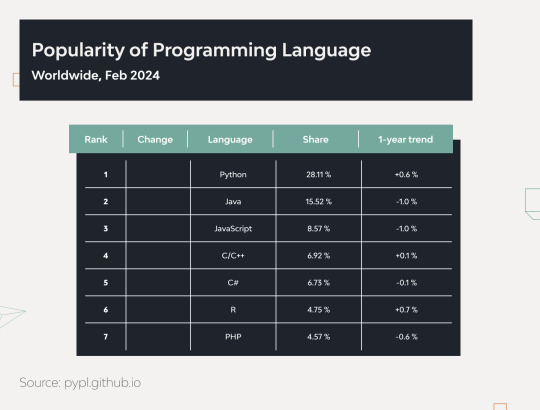
Python integrates existing technologies like AI/ML, IoT, and others to build next-gen and future-proof advanced solutions.
To stay ahead in this competitive market, businesses seek skilled and professional Python developers with experience across different Python frameworks and development.
Python is a versatile language, making it suitable for
Web development (back end)
Data analysis and visualization
AI and machine learning
Scientific computing
Numerical simulations
Automation and scripting
Game development
This is why, businesses want to Hire Python Developers for next-gen Python software development services. However, businesses struggle to find the right Python developers for their requirements. Let us help you.
Why Choose Python for the Next Project?
49.28% of developers prefer Python for Python app development. Why?
Here are some reasons to use Python for your next project in 2024.
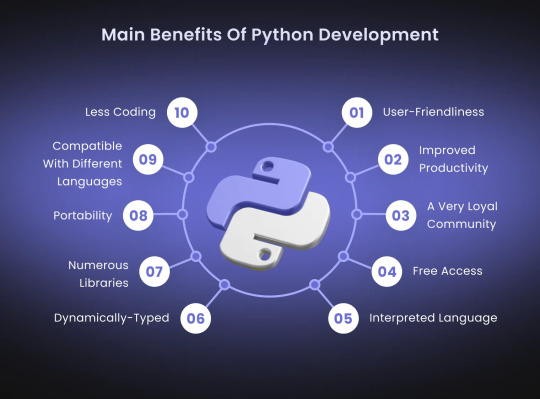
Python is an open-source language that can build cost-efficient solutions.
It has dynamically typed variables.
Python supports GUI programming for creating desktop applications.
As a high-level language, Python is portable across different platforms.
Python is interpreted, allowing for immediate code execution and testing.
It offers more than 200k packages, suitable for developing native, cross-platform, and web-based applications.
Top brands using Python
Google
Nasa
Mozilla Firefox
Facebook
IBM
Dropbox
Netflix
What Does a Python Developer Do?
A Python developer must have the following responsibilities-
Write clean and efficient Python code.
Use Python frameworks and libraries for software development.
Collaborate with teams to translate requirements into technical solutions.
Develop, debug, and maintain web software and applications.
Conduct code reviews and enforce coding standards.
Participate in all stages of software development.
Ensure high-quality coding standards.
Create prototypes and coordinate testing.
Ensure project quality meets client specifications.
Develop Python libraries and frameworks like Flask and Django.
Enhance back-end components for improved performance.
Stay updated on Python and industry trends.
Hire a Python Development Company for skilled and responsible Python developers.
What are the skills of a Python programmer?
While hiring a Python developer, you must assess technical and soft skills.
Proficient in Python and its libraries.
Understanding of Python's capabilities and constraints.
Can use Python web frameworks like Django and Flask
Understanding of Python mobile development frameworks like Kivy, Beeware, and more.
Basic knowledge of front-end technologies (JavaScript, HTML5).
Expertise in object-relational mapping (ORM).
Experience integrating multiple data sources.
Familiarity with testing tools.
Ability to innovate and implement ideas.
Advanced analytical and problem-solving skills.
Strong communication abilities.
Tips and Tricks to Hire Python Developers
You invest time and resources to hire a skilled and relevant Python developer. So to make the most out of your hiring efforts, you must avoid these common mistakes.
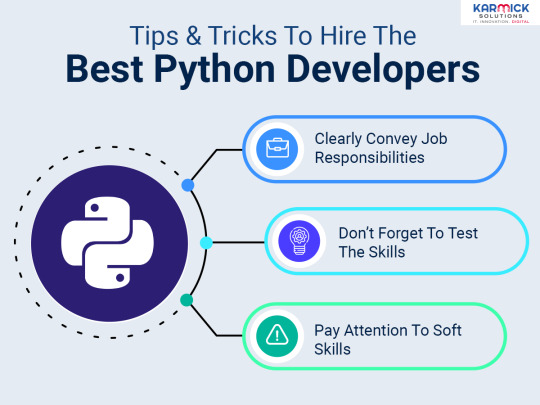
Source
Do not only depend on passive recruiting. You must look actively for skilled developers on various platforms, convey clear job responsibilities, and assess their experience, reviews, and feedback to decide.
Before you hire a Python developer, assess their technical knowledge thoroughly. Be aware of technical skills, and assess their skills, and portfolio thoroughly.
Neglect the communication skills, which are crucial for keeping projects on track and preventing delays.
Simple Steps to Hire the Best Python Developers
Here are simple considerations for simply hiring professional Python developers.
Understand Project requirements
To hire skilled Python developers, you must understand your project’s requirements. You must clearly define your project goals and specifications in your job posting. Also, it will help you decide the size of your team and the experience level of the required developers.
Assess the Developer’s skills and expertise
Another crucial consideration when hiring a programmer is evaluating their skills. Look for expertise in core Python, frameworks like Django or Flask, libraries relevant to your project needs, and familiarity with front-end development. These skills are essential for building robust and efficient software solutions.
Choose developers with relevant experience
Choosing candidates with relevant experience is crucial for successful project development. Hiring programmers solely based on technical skills without relevant experience can negatively impact your project.
Entry-level (0-2 years):
Proficiency in Python syntax and basic programming concepts.
Knowledge of data structures (lists, dictionaries, tuples).
Basic SQL for database interaction.
Familiarity with Git for version control.
Experience with web frameworks like Flask or Django to build simple applications.
Mid-level (3-6 years):
Strong understanding of object-oriented design, coding patterns, and testing.
Building and implementing Big Data solutions.
Proficiency in software development practices and platform maintenance.
Exposure to cloud computing services, especially AWS.
Senior (6+ years):
Expertise in complex logic and solving industry-specific problems.
Experience with ORM libraries for database management.
Data visualization tools like Tableau or Qlik.
Big Data technologies (HDFS, Spark, Scala).
Strong unit testing, debugging skills, and understanding of Python's threading limitations.
You can outsource Python developers to a nearshore development agency to access pre-vetted programmers with relevant experience with similar goals as you.
Interview and assign a test
After shortlisting Python developers based on their skills and knowledge, you can interview them based on their experience and past projects. You can ask them questions as on their experience. You can assign them a task or a coding challenge to assess their critical thinking, problem-solving, and logical analysis. Also, do not forget to consider their soft skills.
Cost to Hire Python Developers
The average hourly rate for a Python developer may range between $20-100.
India and Argentina $20-40
Ukraine $40-60
Poland, Romania, the Philippines, Brazil $50-100
Vietnam and Egypt $50-199
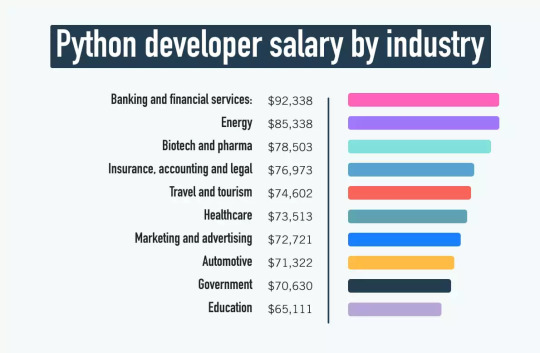
For cost-efficient Python app development services, you can outsource Python development.
Also, read about-
python vs ruby
ray python packagfe
Choose OnGraph for Python web app development
With 15+ years of experience in mobile and web app development, we have built the best team of skilled Ruby on Rails. With our simple hiring process, you can access the capabilities of our top Python developers and hire them for your specific project needs.
Why choose OnGraph- a Python software development company?
Access to global talent
Flexible hiring process
15+ years of expertise
Recognized by top companies
Faster time-to-market deliveries
Agile approach
Leverage the latest technology and tools
Content Source URL: https://bit.ly/3z493dK
0 notes
Text

Python training in developing GUI applications equips you with the skills to create interactive and user-friendly interfaces. By mastering libraries like Tkinter, PyQt, and Kivy, you can design and implement desktop applications with ease. This training covers essential concepts, best practices, and hands-on projects, ensuring you can build professional-grade GUIs to enhance user experience.
For more information visit: https://www.webagesolutions.com/courses/python-training
0 notes